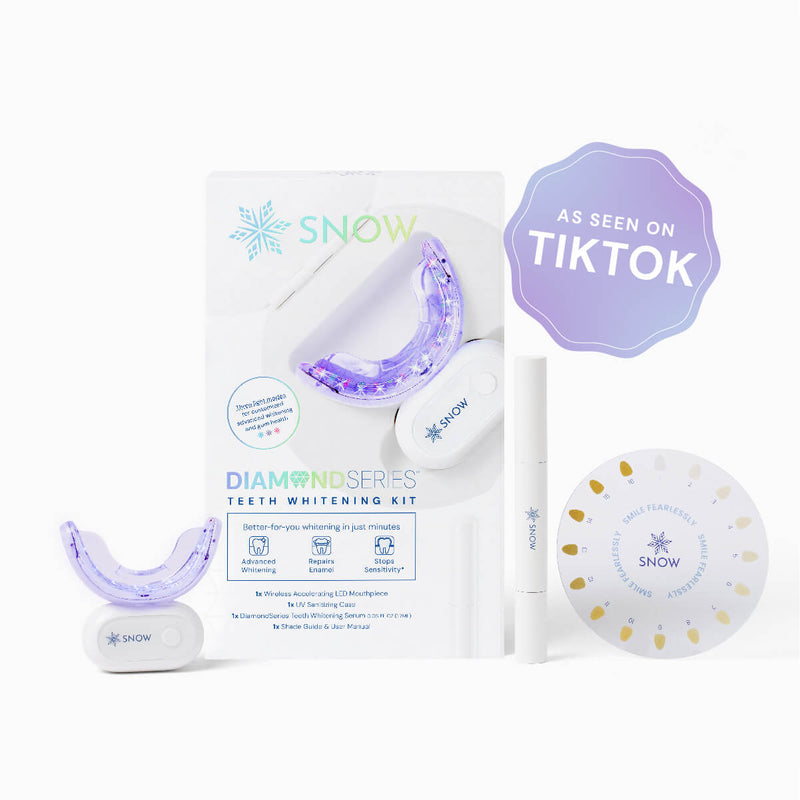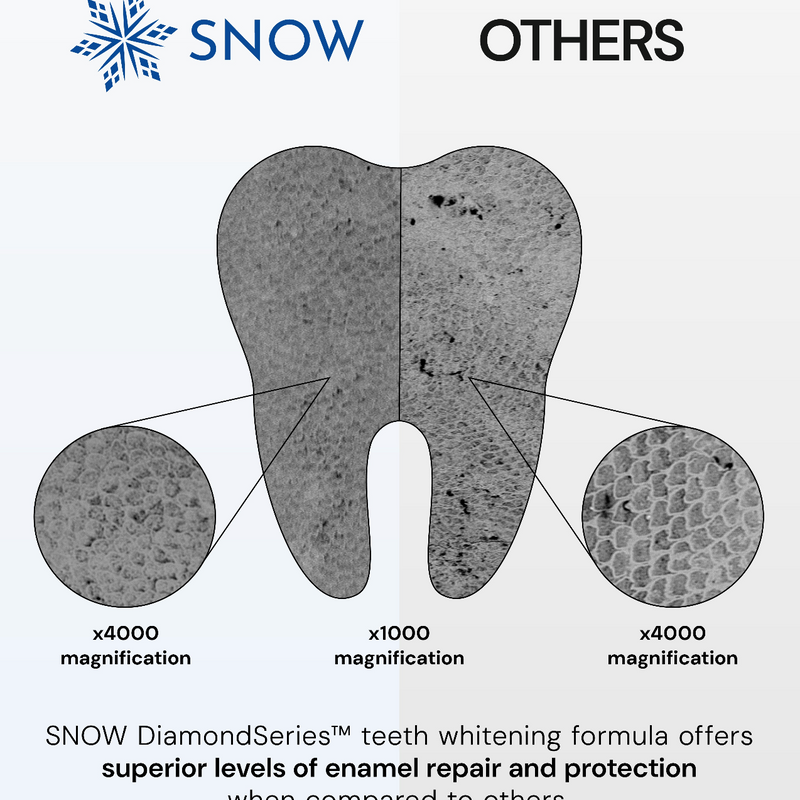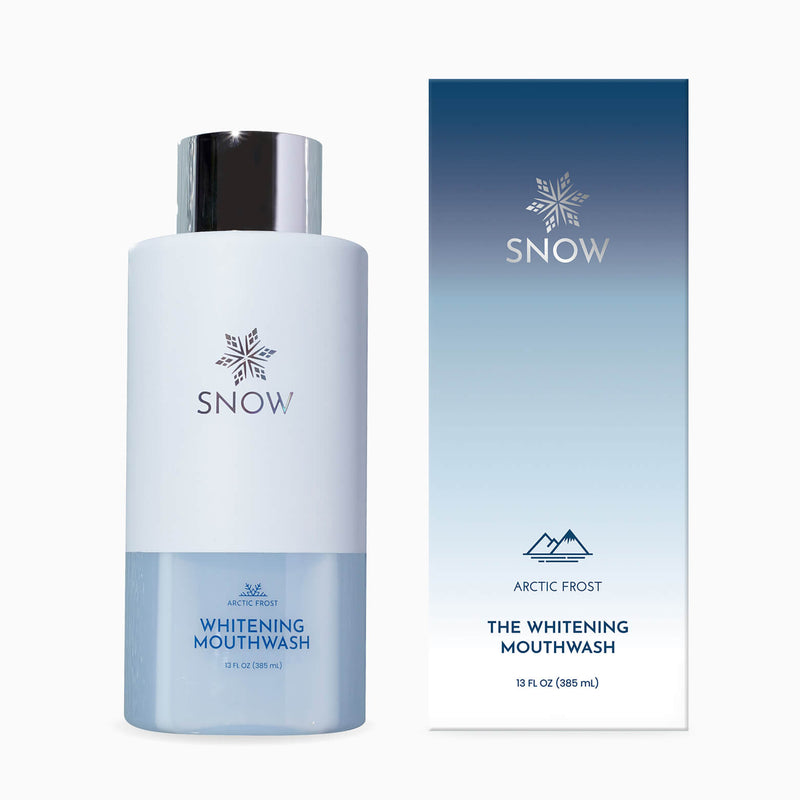How much toothpaste should you use is a common question with a straightforward answer. It's all about finding the right balance to keep your teeth healthy and clean.
In this article, we'll explore how much toothpaste you should use based on your age, the consequences of using too much or too little, the prevalence of dental fluorosis, and how to choose the best oral care products for your needs.
Each section will guide you through essential information to help you maintain optimal oral health.
What this article covers:- How Much Toothpaste Do I Need to Brush My Teeth?
- What Happens If You Use Too Much?
- What Happens If You Use Too Little?
- How Common Is Dental Fluorosis?
- How to Select the Right Toothpaste
How Much Toothpaste Do I Need to Brush My Teeth?
The amount of toothpaste you should use can vary based on your age and oral health needs.
Adults
Our research indicates that, for adults, a pea-sized amount of toothpaste is effective in removing plaque, bacteria, and providing fluoride to strengthen your enamel and prevent cavities.
In addition to using the correct amount, brush twice daily for at least two minutes. This ensures all surfaces of your teeth are cleaned, helping to prevent gum disease and tooth decay.
Fluoride plays a vital role in re-mineralizing your enamel, especially if you avoid rinsing immediately after brushing. Are you supposed to rinse toothpaste after brushing? It's generally recommended to spit out excess toothpaste but not rinse, as this allows the fluoride to continue working on your teeth.
To further enhance your oral care routine, consider incorporating SNOW teeth whitening foam. Its low-abrasion formula ensures a brighter smile without sensitivity.
Children
Our findings show that, for children under three, a smear of toothpaste about the size of a grain of rice is enough. This small amount provides necessary fluoride while minimizing the risk of ingesting too much.

As children grow older, from ages three to six, they should use a pea-sized amount. An adult should supervise brushing to ensure the child spits out the toothpaste rather than swallows it.
For additional whitening options for older children and teens, SNOW teeth whitening strips offer a safe and effective way to enhance their smiles.
These strips dissolve in under 15 minutes and are designed to be enamel-safe, making them perfect for younger users.
What Happens If You Use Too Much?
Using too much toothpaste can lead to issues, particularly if you frequently exceed the recommended pea-sized amount. Excessive ingestion of fluoride can cause gastrointestinal discomfort like nausea or diarrhea, especially in children.
Overuse can also contribute to enamel erosion over time if combined with vigorous brushing.
Overusing toothpaste can increase the likelihood of developing dental fluorosis in children, which leads to visible changes in the enamel, like white spots or streaks.
To maintain a healthy balance while still achieving whitening benefits, SNOW Arctic Frost teeth whitening mouthwash is an excellent addition to your routine.
What Happens If You Use Too Little?
Using too little toothpaste can reduce the effectiveness of your oral hygiene routine. Insufficient toothpaste might not provide the cleaning power needed to remove food particles and plaque from the surface of your teeth.
Based on our observations, this can increase the risk of gum disease and other oral health problems.
For those looking to enhance their cleaning routine, SNOW teeth whitening powder, which gently polishes away surface stains and can be used alone or with toothpaste.
How Common Is Dental Fluorosis?
Dental fluorosis is relatively uncommon, especially in adults, as it primarily affects children during the years when their teeth are still developing. The risk of dental fluorosis is primarily a concern for children under the age of eight when their permanent teeth are still forming.
It's important for parents to monitor their children's toothpaste use closely to minimize the risk of this condition.
How to Select the Right Toothpaste
Firstly, consider your specific dental needs—whether you're looking to whiten your teeth, strengthen enamel, or reduce sensitivity.
Fluoride is essential for cavity prevention, while abrasiveness is also important; too much can wear down enamel, while too little may not clean effectively.
When exploring types of toothpaste, you may come across fluoride-free options. Is fluoride free toothpaste good? Yes! It provides the same benefits without the downsides of fluoride.
Our teeth whitening toothpaste is an excellent choice that caters to a variety of dental needs. It contains premium ingredients like hydroxyapatite, which is known for its ability to repair and strengthen enamel.
This toothpaste is free from sulfates, parabens, and other harsh chemicals, making it a safe option for daily use, even for those with sensitive teeth.
Is it safe to use whitening toothpaste everyday? When using a gentle, low-abrasion formula like SNOW's, it's generally safe for daily use.
Conclusion
Now you know. We've explored the recommended toothpaste amounts for both adults and children, ensuring you're using just the right quantity to maintain your dental health.
The dangers of using too much or too little toothpaste were discussed.
We also touch on how choosing the right toothpaste can impact, with a focus on the benefits of using products like SNOW Teeth Whitening Toothpaste.
So why hesitate? Browse our selection of whitening products, each made to keep your smile bright and healthy.
If you want to learn more, why not check out these articles below:
- Fluoride vs Fluoride Free Toothpaste
- How to Get White Teeth in 1 Day with Toothpaste
- Should You Leave Toothpaste on Your Teeth
- Are Toothpaste Tablets Effective
- Does Whitening Toothpaste Work
- How Long Does a Tube of Toothpaste Last
- Does Toothpaste Kill Bacteria
- How Long Does It Take for Whitening Toothpaste to Work?
- How Does Sensitive Toothpaste Work?
- How Does Whitening Toothpaste Work?
- Does Fluoride Toothpaste Whiten Teeth
- Does Purple Toothpaste Work on Crowns?
- What Toothpaste Whitens Teeth?
- What Happens If You Use Too Much Toothpaste?
- What to Look for in Toothpaste
























